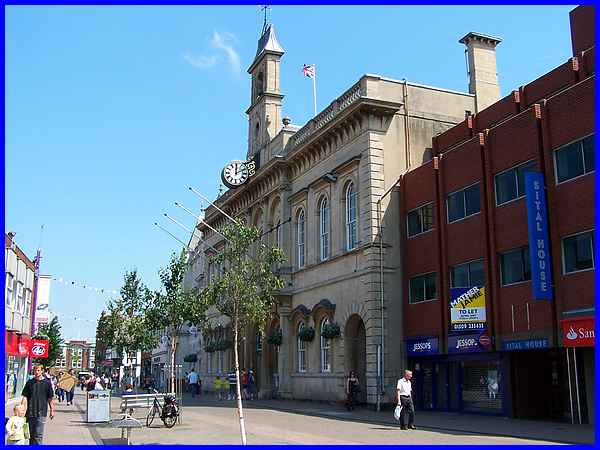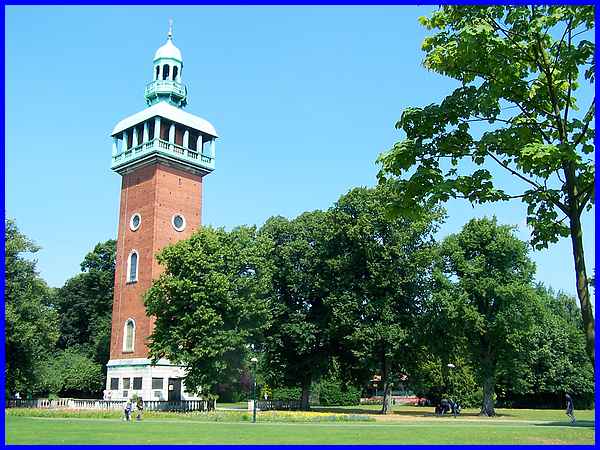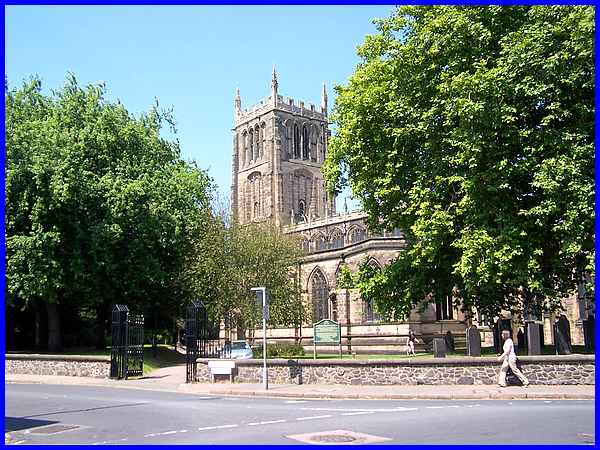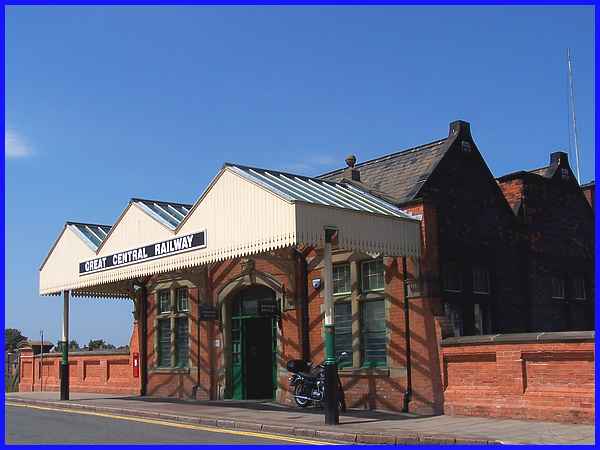Loughborough - Town and Park
w/e 27 July 2014
All of this week's pictures were
taken with a Kodak DX6490
Loughborough is a town some twenty odd miles south
of Ilkeston with a population of about 60,000 swelled by the
temporary residents attending the well-respected University.
The students also contribute to the local economy and the town
centre reflects this with its many shops, pubs and restaurants
but even here the current austerity measures have had an impact
and the town centre is not devoid of "For Sale" and
"To Let" signs.

The Market Place has recently been pedestrianised and work is
still continuing in the surrounding streets. Orange barrier fencing
and road works can be seen all around but the Market Place has
been transformed into a pleasant relatively traffic free open
space. The imposing Italianate Town Hall built in 1855 is a venue
for a multitude of different events housing a theatre where musicals,
concerts and comedy shows are regularly on the agenda. It hosts
a variety of events and exhibitions and is also the home of the
Tourist Information Centre.
|

Since 1998 outside the Town Hall there has been a statue of a
naked man wearing nothing but a sycamore leaf to cover his modesty
and a sock. The statue called "The Sock" was commissioned
by Charnwood Borough Council and created by sculptress Shona
Kinloch as a symbol of the local hosiery industry also featuring
images of the town's history.
|

Another symbol of the town is the 150 ft high Carillon or Bell
Tower situated in Queen's Park which is fairly adjacent to the
town centre. This was built in 1923 as a First World War memorial
for those who lost their lives in that conflict. The tower contains
a small museum and the Carillon of 47 bells can regularly be
heard across the town centre when recitals are given usually
twice a week.
|

Queen's Park itself was originally opened in 1899 by Mr W.B.
Paget on four acres of land and the Bandstand followed three
years later. Additional land was acquired between 1905 and 1907
which more than doubled the size of the park and the Bandstand
was moved to its current position where it has stood since before
1914.
|

More land was purchased in 1916 to create the park we see today
which now includes a number of aviaries that house a variety
of species that can be identified from notices on the cages.
They include Parakeets, Java Sparrows, Napoleon Weavers, Crimson
Rosellas, Zebra Finches among others and I'm sure I saw the common
or garden budgie too!
|

The beautiful flower beds and displays in Queen's Park contribute
towards Loughborough's annual entry into the national "In
Bloom" competitions and since 2012 a number of unique sculptures
designed by Loughborough University students have complimented
the flowers. Two of this year's sculptures can be seen towards
the left of the image above and a third is peeping out from behind
the Great Paul Bell Casing. Loughborough is famous for its bell
foundry founded by John Taylor in 1858 which has many famous
bells, including "Great Paul" for St Paul's Cathedral
in London. There's much more information about Loughborough's
bell casting heritage on an adjacent board in the gardens.
Click here to read about Loughborough's Bell Making heritage - opens in a popup window
|

Two of the sculptures are also visible in this image but the
Victorian building in the background, Queen's Hall, houses the
Charnwood Community Museum. As well as displaying a wide variety
of exhibits the museum also holds special events, craft workshops
and family fun days.
|

Queen's Park lies south of the Market Place but after lunch we
headed to the north of the market and made for the parish church.
This is actually All Saints with Holy Trinity Church and as would
be expected in a town renowned for the production of bells, it
has a peal of ten bells and also contains a memorial to the Taylor
family. The Anglican church dates from the fourteenth century
with a fifteenth century tower and clerestory but sits on the
site of earlier Norman and Saxon churches. It underwent some
extensive restoration work between 1859 and 1862 under the direction
of architect Sir George Gilbert Scott. Various other projects
have been completed since making it fit for the twenty-first
century.
|

The Rectory stood to the west of the church and what remains
of the thirteenth century manor house has now been turned into
The Old Rectory Museum where there are displays of local history
and archaeological discoveries. The museum is open between April
and October and is now surrounded by The Rectory Wildlife Garden,
a community project that is open daily.
|

On our way home we passed another museum which is contained within
the Loughborough Central Station. This is part of the Great Central
Railway, the only double track privately run heritage railway
in the UK. Although we enjoyed our day out in Loughborough, another
day could easily be spent here to see and travel on the steam
trains that operate along eight miles of track to Leicester.
The trains run daily throughout the summer and at weekends during
the winter months. It was back in 2002 when we were last here
to travel on the Santa Special (link) and I wonder whether it will be
another dozen years before we're here again. The steam trains
will still be attracting visitors and, if it goes ahead, HS2
will be a further eight years off and the subject of intense
debate and argument. Give me steam every time!
|










